Measuring customer satisfaction and loyalty is the key to brand success. NPS surveys are a simple way to learn customers' wants and expectations to keep them high.
NPS email surveys rely on the NPS question:
"On a scale of 0-10, how likely are you to recommend our product/service to a friend or colleague?"
The responses help businesses gauge how customers perceive their brand and products. A high NPS score indicates that customers are highly satisfied and loyal, while a low score suggests areas for improvement.
Customers are divided into detractors, passives, and promoters, depending on how they answer.
- Detractors (0-6): These customers are unhappy and may damage your brand's reputation through negative word of mouth.
- Passives (7-8): These customers are satisfied but not loyal enough to promote your brand actively. You can ask them about easy fixes that will increase your customers' satisfaction levels.
- Promoters (9-10): These are your most loyal customers. They are likely to recommend your brand to others or post positive reviews about your business.
Once you’ve collected the responses, you can calculate your overall NPS score by subtracting the % of detractors from the % of promoters. This gives you a clear, actionable metric of customer loyalty. You can calculate your score with a tool like this or check as it automatically updates in real time within the Survicate results panel.
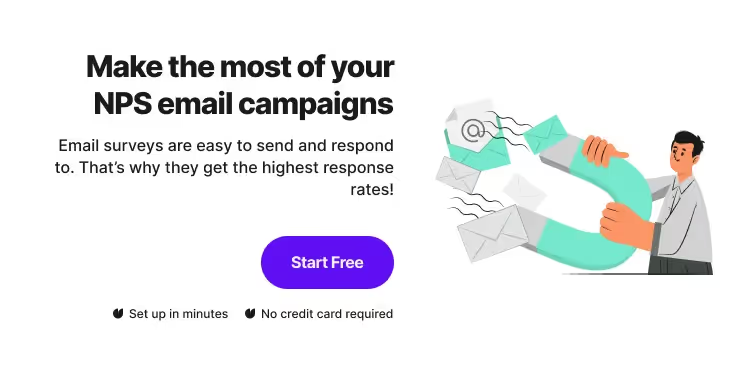
You should analyze your NPS results to
- gauge customer satisfaction
- measure customer loyalty
- predict future growth
- develop your products and services based on customer feedback instead of assumptions
This analysis will help you better understand what’s driving customer satisfaction and identify any pain points that need addressing.
You can distribute NPS surveys in many ways - aim to catch your users on their preferred channels at the right time. And since email is the most successful marketing communication channel, giving NPS email surveys special attention makes perfect sense.
How do you send NPS mail the right way?
With just a few tricks, you can improve the effectiveness of your NPS email survey.
1. Decide what kind of data you want to collect
NPS can be relational or transactional. Each has a different focus.
- Relational NPS measures overall customer loyalty, feelings about your company, and how likely they are to recommend you.
It's important to track this metric regularly.
- Transactional NPS looks into the customer’s experience and their likelihood of recommending you based on their most recent interaction.
This should be tied to an event in your customer journey, e.g. after an onboarding call.
You can also want to segment your customers based on
- their job title (e.g., marketers versus customer success specialists)
- their previous scores (promoters vs detractors)
- age
- joining date (new customers vs. those who have been with you for over six months) or
- any other factor that matters for your business
You might discover that while marketers are your promoters, customer support specialists are much less eager about your product. Maybe younger customers are less satisfied with your services. Use such insights for further investigation, feature prioritization, and marketing campaigns.
Can you automate this? Of course! If you use Survicate, each email survey will have special merge tags that will let you identify respondents. You can also take advantage of integrations like HubSpot to gather more attributes. Finally, you can use Survicate's Insights Hub to expedite the analysis.
2. Determine your sample size
In customer experience, you should pay attention to every single answer.
But it's good to come up with a minimum number of responses you want to collect. This will help determine whether you have enough data once you have it. The bigger the sample size, the more statistically significant your results will be. Email survey response rates are among the highest, so you can count on your results.
If you are not sure how many responses you should aim to collect, use a sample size formula.
3. Update your email list
Before you send NPS email surveys, update your email list.
Sending emails to an old list can skew the results—you’ll have the wrong idea about your sample size. Plus, your open and response rates will drop.
Low open rates indicate that your survey respondents don’t wish to communicate with you. This will harm the deliverability of your future emails. Worst-case scenario, mailbox algorithms will interpret your NPS email campaign as spam and block it. This is especially important in 2024, with Google's recent spam update.
For this reason, make sure that:
- your email list consists of an active target audience only
- every email address you have is correct
- you keep building a solid, permission-based subscriber list where your recipients have expressly agreed to receive your emails (to stay safe from spam filters or GDPR-related penalties)
- your emails are engaging enough to activate your subscribers—you don’t want your mailing list to keep shrinking
4. Thank customers for their feedback
Customers don't spend time and effort to fill out your surveys out of curtesy. They demand better experience. or they want give you a shoutout about a good experience. You should thank them for their time.
Whenever someone completes your survey, send them a “thank you” message to show appreciation.
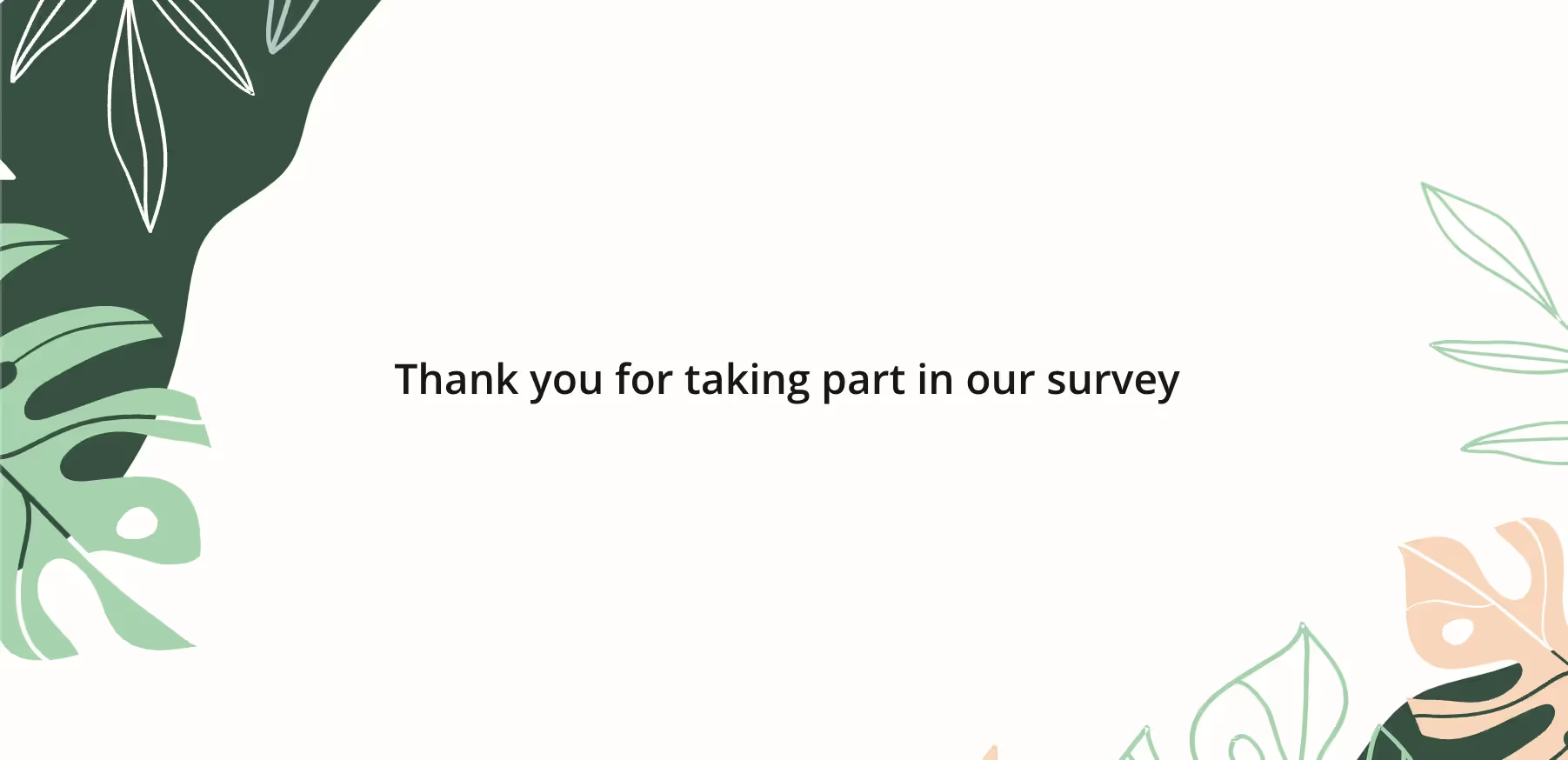
Close the feedback loop - it's very important. You want to show your customers that you are listening to their remarks. That way, they are more likely to submit feedback next time you ask.
5. Add follow-up questions to understand the reasons for each answer
This NPS survey best practice is recommended by its creators. After all, knowing your Net Promoter Score (and benchmarking the NPS against your competition) is just the beginning. You must also find out the reason behind it.
Here’s where follow-up open-ended questions come into play. They will give you concrete, actionable, honest feedback to fuel your customer experience program.
You can ask NPS detractors (i.e., the respondents who give you a score between 0 and 6) for suggestions on improving.
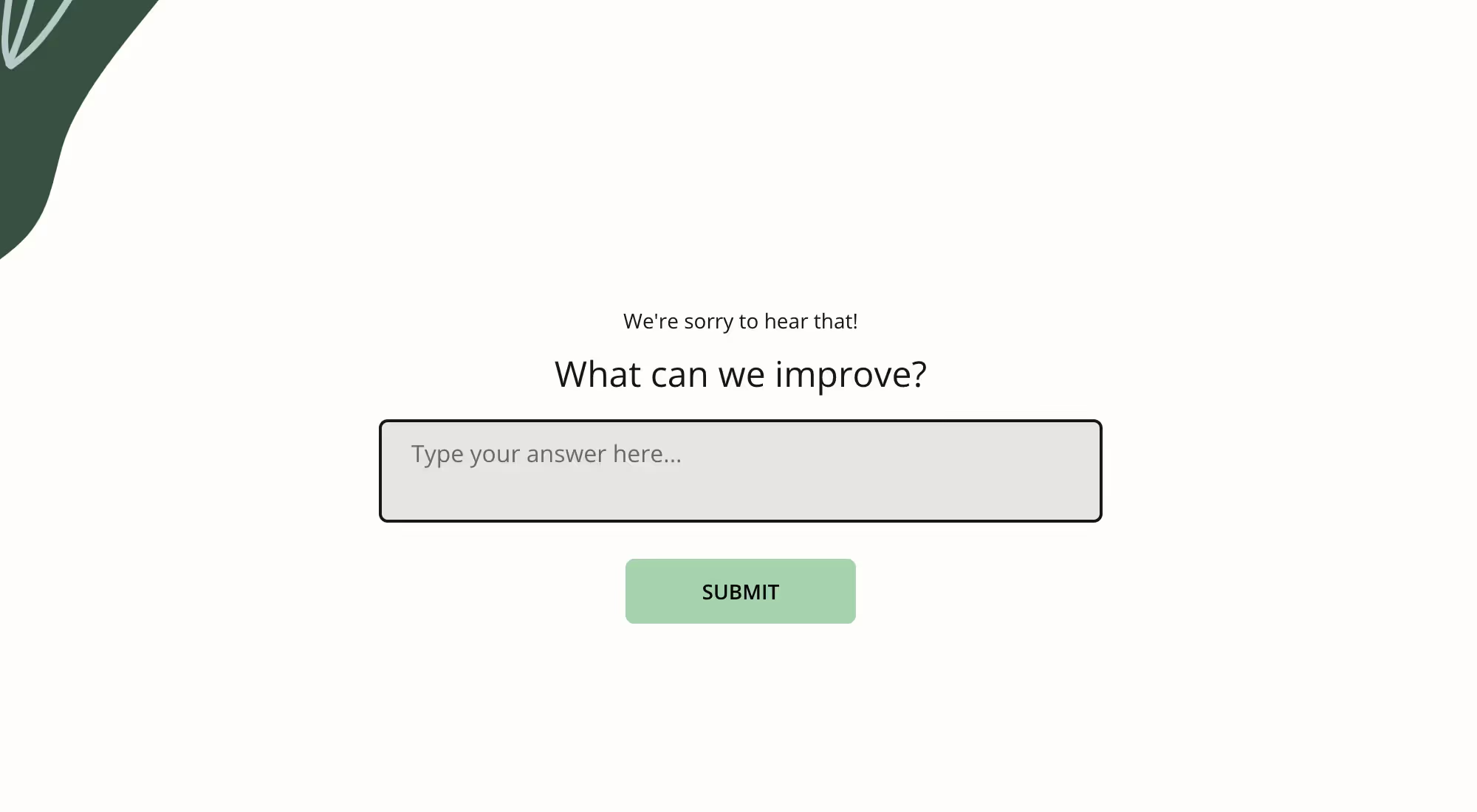
As for passive customers (those who gave you a 7 or 8 score, so a relatively positive one), ask them what would turn their chosen NPS score into a 9 or 10 next time around:
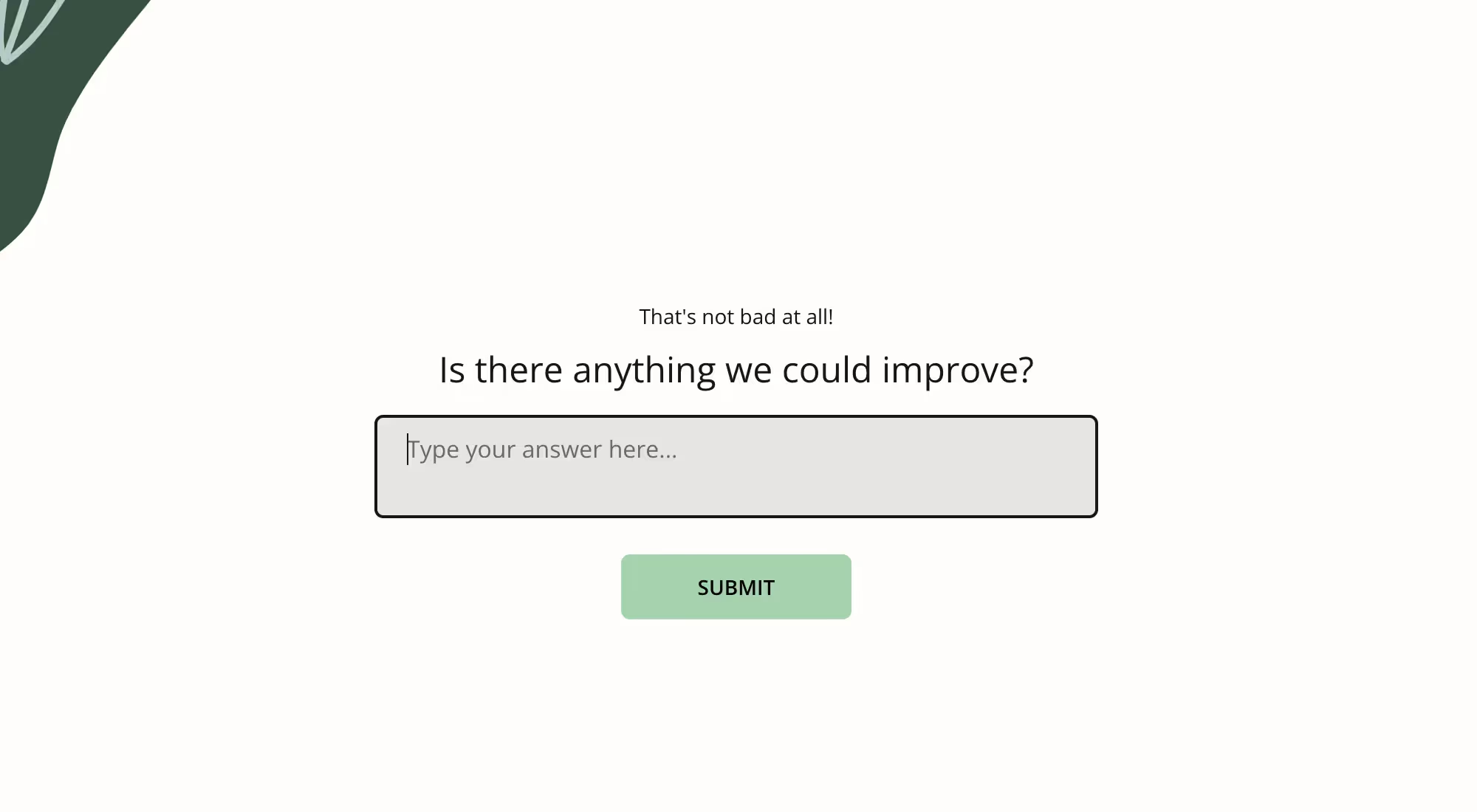
Finally, you can ask your NPS promoters (i.e., happy customers) about what exactly it is that they love about your brand:
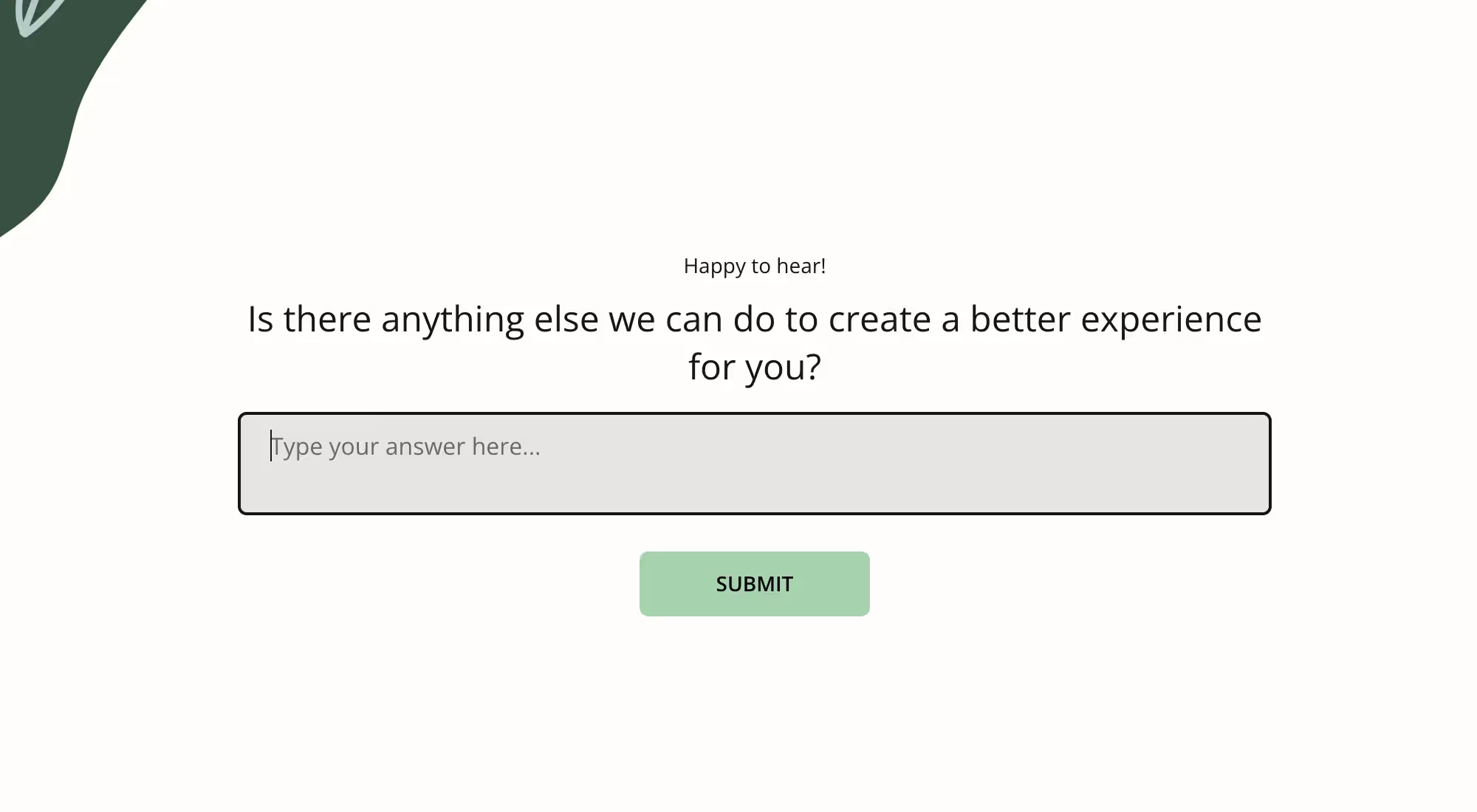
And if you’re feeling lucky, you can ask if they would actually like to recommend your company by leaving you a review!
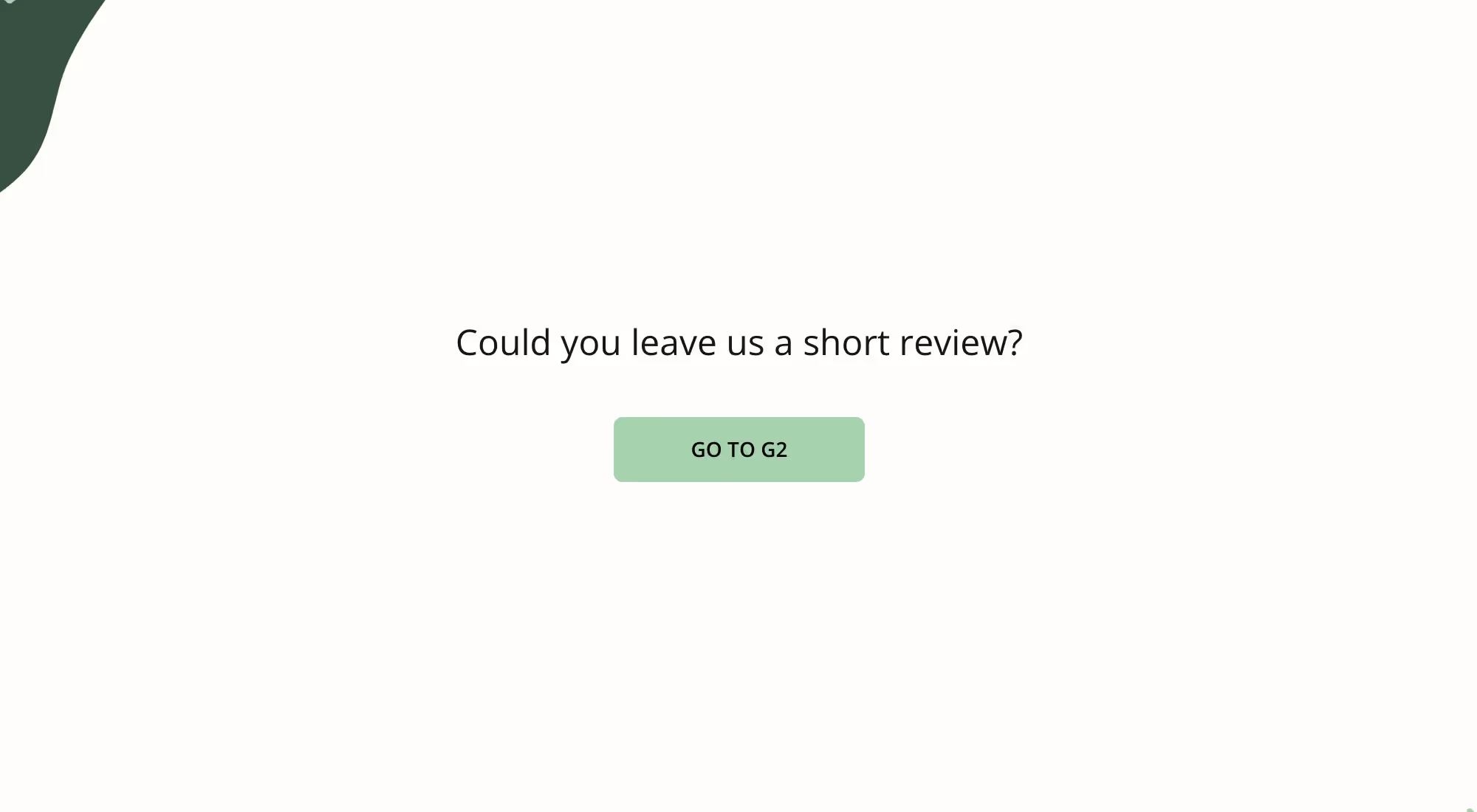
Remember, don’t use too many open-ended questions to avoid survey fatigue. One at a time is perfectly okay. Use our NPS template which is already set up with this survey logic.
6. Track email open rates
Checking how many people open your NPS survey emails is important to see if they are interested. It helps improve emails, target specific groups, and fix any issues with email delivery. Businesses can improve their NPS email campaigns by looking at open rates and getting more useful feedback.
Survicate integrates with reputable email marketing service providers like Mailchimp, Constant Contact, and HubSpot. These platforms offer built-in tools for tracking various metrics, including open rates.
How to boost NPS survey response rate?
If you are unhappy with your average NPS response rate, you can do a few things to help boost it.
1. Embed the first question into your NPS email.
Embedding the first question in the email body is among the best ways to boost response rates.
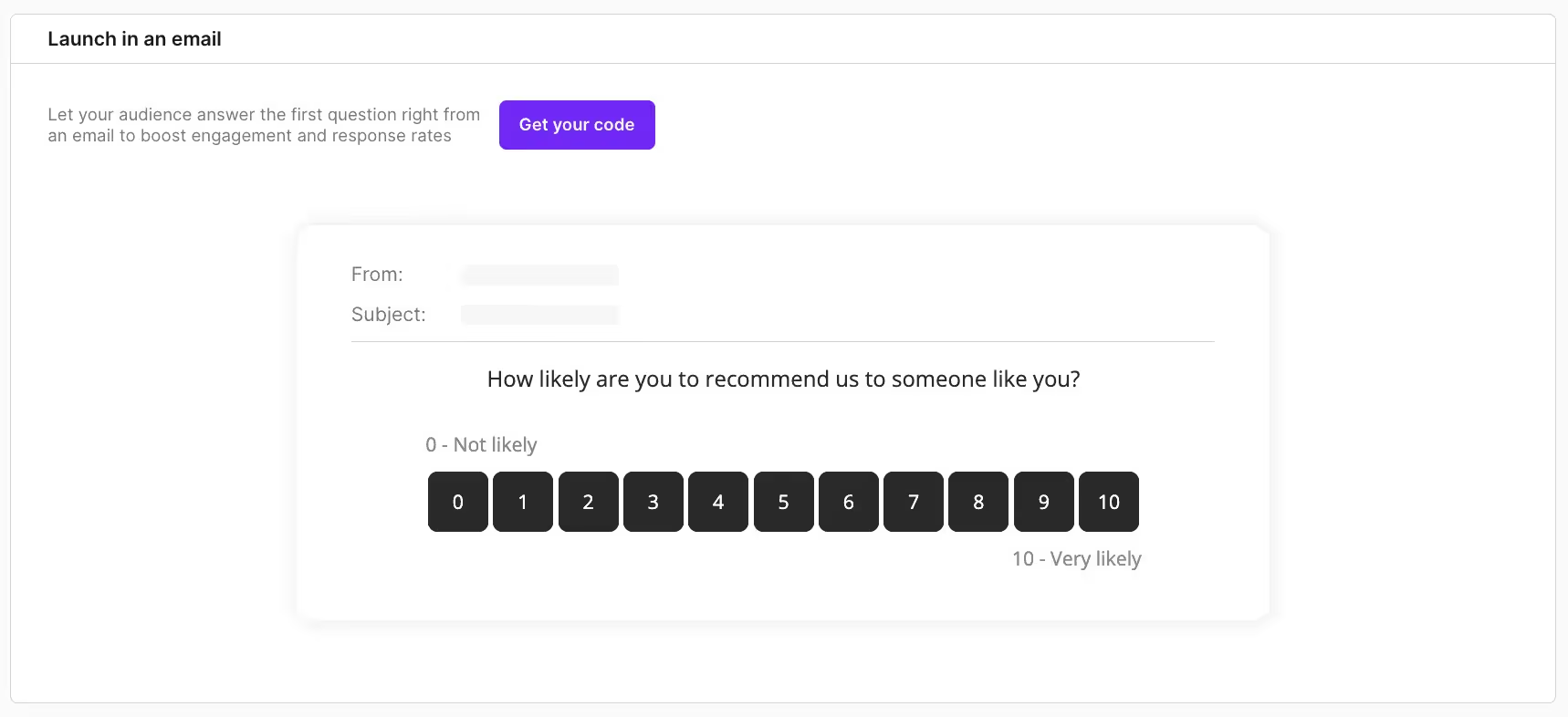
When you embed the first question, your respondent will be able to start the survey right from their email. That way, you get them engaged before they move on to another page. Survicate also collects partial responses, so even if they abandon the survey then and there, you still get some data.
2. Personalize your NPS email survey
72% of consumers say they only respond to personalized messaging, including emails. You can personalize your survey invitation, email subject line, questions, and even answer choices.
While writing your questions, the least you can do is include your respondent’s first name to make it more appealing. With Survicate, you can recall information inside survey questions with respondents’ previous answers or even use pre-saved attributes.
After all, saying:
Hi Tommy, quick question. How likely are you to recommend our brand to your friends and family?
sounds way better than:
Hello, could you tell us how likely you are to recommend our brand to someone with a similar background?
Doesn’t it?
Many NPS tools, including Survicate, let you send multilingual surveys. Use this feature to appeal to international audiences. While English usually does the trick, many respondents might be more inclined to take a survey in their mother tongue.
3. Send your NPS email surveys from a person, not a brand
Sending emails from an individual’s account can also increase the email open rates and NPS survey completion rates.
There are two reasons for that:
- A name and a face behind a message make it more friendly and personal.
- It lets people know they can engage in a dialogue.
Sending your email from an inaccessible-sounding address (such as “noreply@companyname.com”) kills the conversation. And you don’t run NPS surveys because you don’t want to talk to your clients!
But an email coming from a person is just half the battle. A good practice is to explain why you’re running the survey. Write a short survey introduction explaining that you’re reaching out to understand your users’ needs better.
4. Find the right time for your email
As the old saying goes, timing is everything. It's no different for your NPS email survey.
Research the best time to click “send” on your Net Promoter Score email. Or schedule your NPS campaign in your email marketing tool.
Regarding email open rates, the best hour and day depends on whether you're a B2C or B2B business.
- For B2C emails, there isn’t one universal "perfect" time. However, evenings and weekends can work particularly well when targeting consumers who check their personal emails outside of regular work hours. A/B testing your emails at different times is an effective way to see what works best for your audience.
- For B2C emails, studies show that Tuesday, Wednesday, and Thursday mornings are often the most effective. This is when professionals are most likely to check their emails and engage with content.

But don't just take these rules of thumb for granted. If you've sent marketing emails or email surveys before, look at your previous response rates. Are there any hours or days when you've seen the best results?
If you have an international audience, things get a little more complicated. For best results, you should send emails based on the time zones. Most CRMs, like HubSpot, automatically schedule emails according to time zones. If you have a large segment of clients with no geolocation data, dive into your analytics tool and try to find the average best time.
5. Use mobile-friendly NPS survey software
In today’s world, where mobile usage is increasing rapidly, your NPS surveys must be optimized for mobile devices. More people now check their emails on their smartphones rather than on desktop computers, so ensuring that your surveys are mobile-friendly can make a big difference in response rates.
Imagine a person on a bus or at a cafe casually scrolling through their mailbox only to come across your survey. They have some time to kill. If all it takes to complete the survey is one click inside their device, you might be in for an excellent survey response rate. By designing an easy-to-use, mobile-optimized survey, you increase the chances of customers responding when they're on the go.
It is much less likely such a person would go to their desktop whent hey get home, open up their inbox, search for your survey email, and take it from there.
If you use Survicate, you don't have to worry about that. All our email surveys are perfectly responsive, regardless of screen size. This allows you to cater to your audience wherever they are, ensuring a smooth, frustration-free experience.
6. Follow up on low scores
Your customer success team should pay special attention to NPS detractors—customers unhappy with your service.
To avoid negative word-of-mouth spreading online, always try to reach out to them and make up. That's a job for your customer success team.
Since reacting to feedback in real-time is always best, consider implementing an outreach process like the one below.
- Set up alerts for scores between 0 and 6—make sure your customer success team is notified immediately, for instance, on Slack. With Survicate, you can set the alerts up in your survey panel.
- Review the scores and answers to the NPS follow-up questions (if applicable). Or use Survicate's Research Assistant - an AI chat you can ask questions about your feedback directly. It will even give you links back to original feedback, so you can verify insights with the original.
- Ensure that one of your customer success reps reaches out to unhappy customers. Outreach should show empathy and promise improvements or offer to reimburse them for their inconvenience.
7. Send a follow-up NPS email
If your first NPS response rate is low, don’t give up. Send a follow-up in a few days with a call to action.
Ensure that the copy and subject line are friendly and non-obtrusive, and don’t overdo it with the number of emails you follow up with (two or three will suffice).
Remember about the power of personalization. Consider sending a separate follow-up email to those who opened the email but didn’t respond and those who missed the email altogether.
NPS email subject lines—best practices and ideas
The first factor that will impact the success of your NPS email is the open rate. Let’s quickly look at some tips to make your email survey subject lines irresistible.
1. Add the recipient’s name
We mentioned personalization earlier in this post—it’s just as applicable to your subject line. Use your respondent’s first name to make it sound more friendly and to trigger their interest; for example,
Tony, we’ve got a little favor to ask you.
According to Campaign Monitor, users are 26% more likely to open emails with personalized subject lines.
2. Keep your NPS email subject line short
Long subject lines get cut off in inboxes, especially on mobile devices.
Keep your subject lines under 50 characters to make sure they display correctly. You can also get email previews in most CRM and email tools.
3. Create a sense of importance or urgency
As Net Promoter Score surveys are recurring and limited (i.e., run every few months for a certain number of days), trigger your recipient’s reaction by creating a sense of importance.
Provoke a sense of urgency in your audience with a clock-is-ticking kind of subject line, such as:
Only three days left to fill out our NPS survey!
4. Use humor or a distinct tone of voice
People receive hundreds of emails a day, so try to get yours noticed.
Align your voice with your branding, and add some twists and humor. You can never go wrong with a series of jokes like in the subject lines for survey emails below.
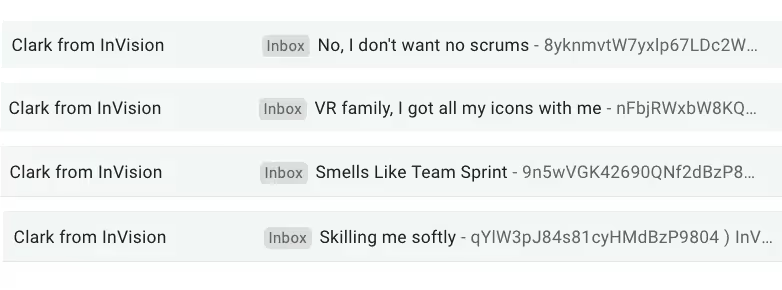
5. Prioritize your NPS email subject lines’ clarity
Email subject lines that are clear to the recipient have a whopping 541% higher response rate than vague ones.
To best understand what ‘clarity’ means, take a look at the example below:
Vague subject line: “Hannah, we need your opinion!”
Clear subject line: “Hannah, care to fill out a quick survey?”
Ready-to-grab NPS email templates
Here are two sample survey emails you could try out. You can adjust them as you please or take them for an A/B-test spin!
NPS email example #1:
Hi [name],
Thank you for your recent purchase. We truly appreciate having you as a customer!
We always want to provide the absolute best service, so we have a small favor to ask.
Would you spare a moment to fill out our NPS survey? It would mean the world to us and will only take a few seconds (promise🤞). Just click on the relevant score below:
NPS template
All best,
[Name & surname]
Head of Customer Success at [Your company]
NPS email example #2:
Hi [name],
Keeping our customers happy is our number one priority. And to do that, we need to know what you think of us in the first place.
Since you’ve been using our services for some time now, would you spare 2 minutes to answer a short survey?
One more thing: if you fill it in before [date and hour], we will send you a $10 Amazon voucher as a thank you.
NPS template
Thanks a million!
All best,
[Name & surname]
Head of Customer Success at [Your company]

Use the best NPS email survey tool
To make the most of your NPS email surveys, we recommend using an NPS tool such as Survicate.
With Survicate's generosity, you can use the NPS survey template to collect free responses for up to 10 days. Then, upgrade your subscription plan to run NPS email campaigns at regular intervals.
Ready to find out your NPS score? Set up your Survicate account and have your first survey ready in minutes.
Gain a deeper understanding of NPS survey results from different sources
Try Survicate’s new Insights Hub. This AI-powered tool makes collecting, organizing, and analyzing feedback from all your channels easy. You can connect sources like CSV files, your public reviews, and Intercom chatlogs with survey responses. All the data flows into one place, saving you hours of manual work.
The Feedback Hub automatically sorts your feedback into categories. You can even create your own custom topics. Use these insights to make data-driven decisions and improve customer satisfaction quickly.
The Research Assistant helps you dig deeper. It's an AI assistant that you can ask questions about your customer feedback. It will give you answers based on responses from real customers and users. You can even trace insights back to their source for more context (or identify the respondent for a follow-up).
Start using Insights Hub today and get the most out of your feedback. It’s fast, simple, and helps you stay ahead of customer needs.








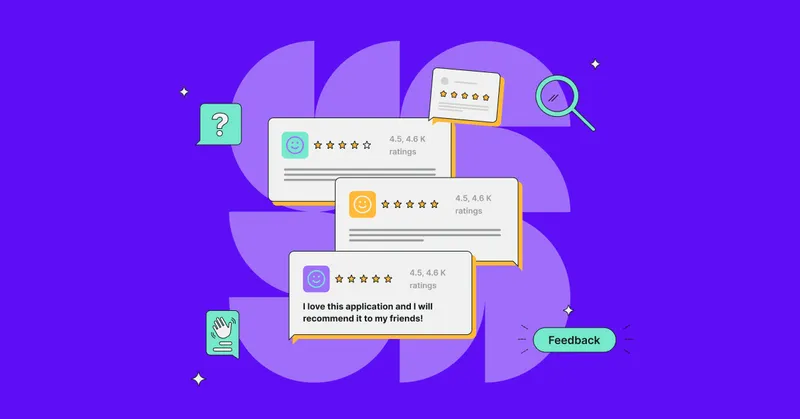
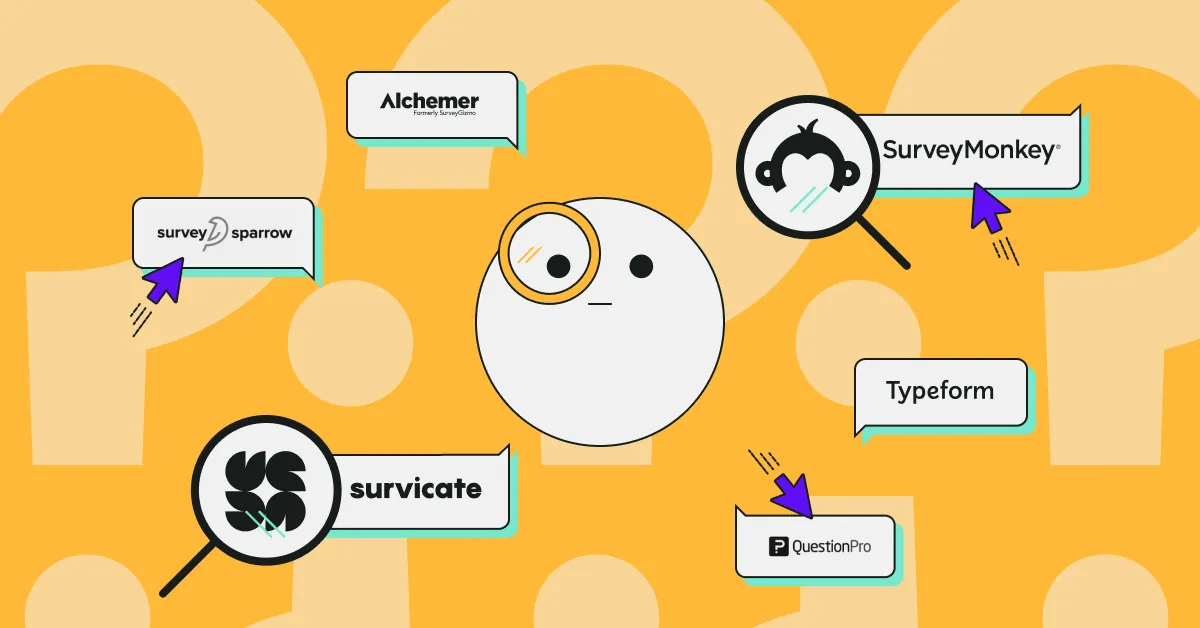

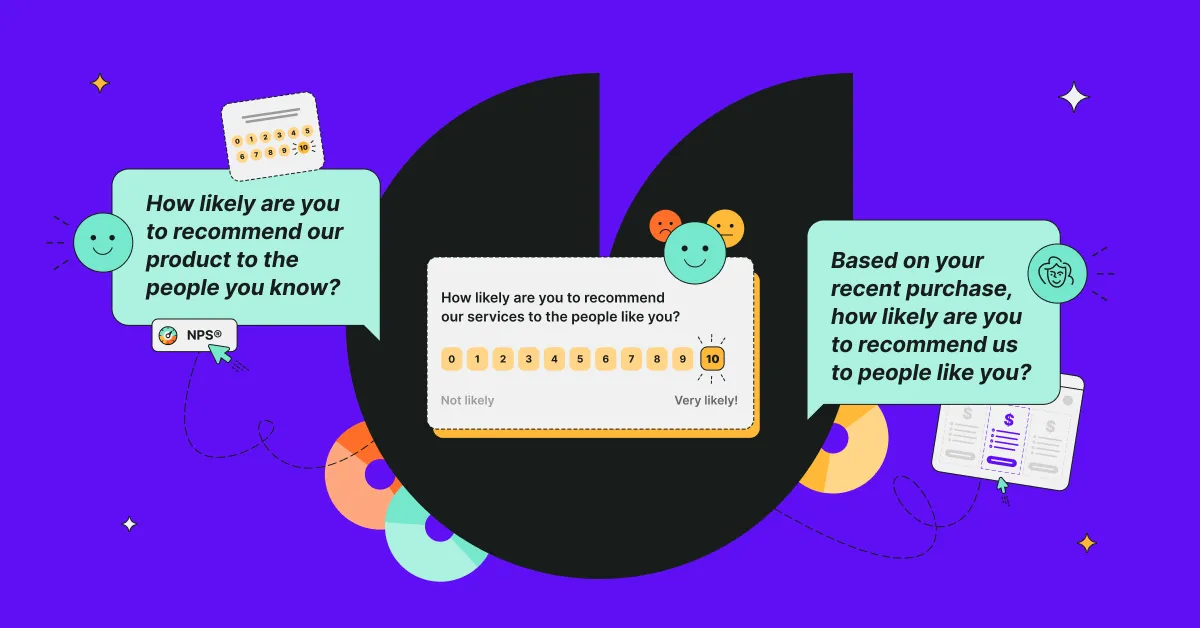
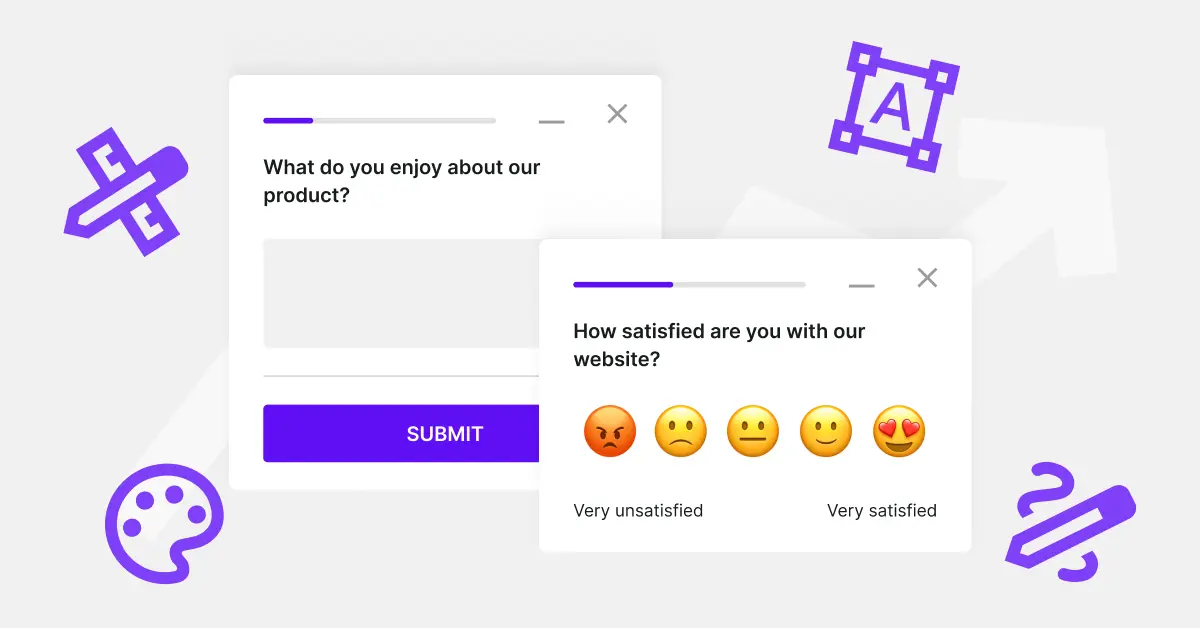
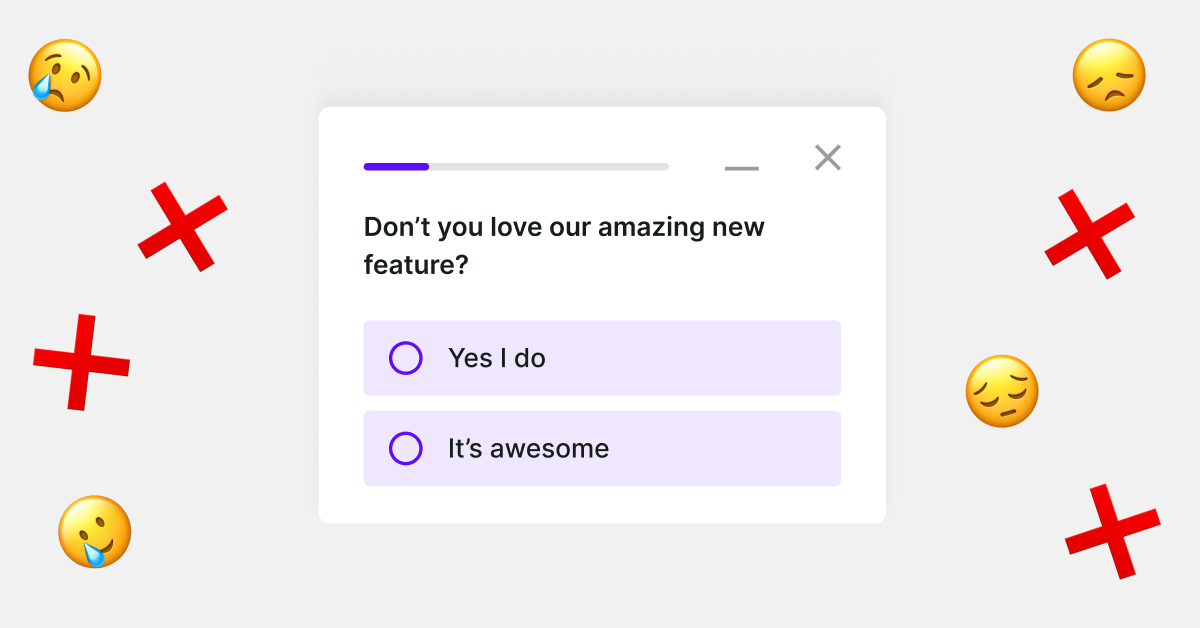

.svg)

.svg)



